Mastering the Art of Email Marketing: Tips and Tricks for Successful Campaigns

Email marketing is a digital marketing strategy that involves sending promotional messages or newsletters to a group of individuals via email. It is a direct and cost-effective way for businesses to communicate with their target audience and build relationships with customers. The concept of email marketing has been around since the early days of the internet, but it has evolved significantly over time.
In the early 1990s, email marketing was primarily used for sending mass emails to a large number of recipients. However, as technology advanced and spam became a major issue, email marketing strategies had to adapt. Today, email marketing is more focused on delivering personalized and relevant content to subscribers.
In today’s digital landscape, email marketing plays a crucial role in the success of businesses. With the rise of social media and other digital channels, it may seem like email is becoming less relevant. However, research shows that email is still one of the most effective marketing channels available. It allows businesses to reach their target audience directly and deliver tailored messages that are more likely to resonate with recipients.
Key Takeaways
- Email marketing is a powerful tool for businesses to reach and engage with their audience.
- Effective email campaigns require careful crafting and consideration of segmentation and personalization strategies.
- A/B testing can help optimize email campaigns for better open and click-through rates.
- Integrating social media and other channels can enhance the reach and impact of email marketing efforts.
- Utilizing guest WiFi and WiFi analytics can provide valuable insights and opportunities for targeted messaging.
Understanding the Importance of Email Marketing
There are several benefits of email marketing that make it an essential tool for businesses. Firstly, email marketing allows businesses to reach a large number of people at a relatively low cost. Compared to traditional advertising methods such as print or TV ads, email marketing is much more cost-effective.
Secondly, email marketing allows businesses to build relationships with their customers. By sending personalized and relevant content, businesses can establish trust and loyalty with their subscribers. This can lead to increased customer retention and repeat purchases.
Furthermore, email marketing has been proven to be highly effective in terms of ROI (return on investment). According to a study by the Direct Marketing Association, every $1 spent on email marketing generates an average return of $42. This makes it one of the most profitable marketing channels available.
Crafting Effective Email Campaigns
To create successful email campaigns, there are several key elements that need to be considered. Firstly, the subject line of the email is crucial in determining whether or not the recipient will open it. It should be concise, compelling, and relevant to the content of the email. A good subject line can significantly increase the open rate of an email.
In addition to the subject line, the content of the email should be engaging and valuable to the recipient. It should provide useful information or offer a solution to a problem. The tone and style of the email should also match the brand’s voice and personality.
When it comes to email design and layout, simplicity is key. Emails should be easy to read and navigate, with clear call-to-action buttons. It is also important to optimize emails for mobile devices, as more and more people are accessing their emails on smartphones and tablets.
Segmentation and Personalization Strategies
| Segmentation and Personalization Strategies | Metric | Value |
|---|---|---|
| Segmentation | Number of Segments | 5 |
| Average Conversion Rate by Segment | 10% | |
| Segmentation Accuracy | 90% | |
| Personalization | Number of Personalized Campaigns | 3 |
| Personalization Effectiveness | 15% increase in conversion rate | |
| Personalization Accuracy | 85% |
Segmentation is a crucial aspect of email marketing that involves dividing your email list into smaller groups based on specific criteria. This allows businesses to send targeted messages to different segments of their audience, increasing the relevance and effectiveness of their campaigns.
There are several types of segmentation criteria that can be used, such as demographics (age, gender, location), behavior (purchase history, website activity), and interests (preferences, hobbies). By segmenting your email list, you can tailor your messages to each group’s specific needs and interests.
Personalization is another important strategy in email marketing. By using the recipient’s name in the subject line or body of the email, businesses can create a more personalized experience for the recipient. Personalized emails have been shown to have higher open rates and click-through rates compared to generic emails.
A/B Testing for Optimal Results
A/B testing is a method used in email marketing to compare two different versions of an email to see which one performs better. It involves sending two versions of an email to a small sample of your email list and measuring the response rates. The version that performs better is then sent to the rest of the email list.
A/B testing can be used to test various elements of an email, such as subject lines, call-to-action buttons, images, and email copy. By testing different elements, businesses can optimize their email campaigns and improve their overall performance.
For example, you can test two different subject lines to see which one generates a higher open rate. Or you can test two different call-to-action buttons to see which one generates a higher click-through rate. By continuously testing and optimizing your emails, you can improve the effectiveness of your campaigns over time.
Maximizing Open and Click-Through Rates

To maximize open rates, there are several strategies that businesses can implement. Firstly, the subject line of the email should be compelling and relevant to the recipient. It should create a sense of urgency or curiosity that entices the recipient to open the email.
Secondly, the sender name should be recognizable and trustworthy. Using a familiar name or the name of a person within the company can increase the likelihood of the email being opened.
To improve click-through rates, businesses should focus on creating clear and compelling call-to-action buttons. The button should stand out from the rest of the email and clearly communicate what action the recipient should take.
It is also important to optimize emails for mobile devices, as more and more people are accessing their emails on smartphones and tablets. Emails should be easy to read and navigate on smaller screens, with clear call-to-action buttons that are easy to tap.
Lastly, email deliverability is crucial in ensuring that your emails reach the recipient’s inbox. To improve deliverability rates, businesses should follow best practices such as using a reputable email service provider, regularly cleaning their email list, and avoiding spam trigger words in their emails.
Integrating Social Media and Other Channels
Integrating email marketing with social media and other channels can have several benefits for businesses. Firstly, it allows businesses to reach a wider audience and increase their brand exposure. By promoting their email campaigns on social media, businesses can attract new subscribers and expand their reach.
Secondly, integrating channels allows businesses to create a cohesive and consistent brand experience for their audience. By using the same branding and messaging across different channels, businesses can reinforce their brand identity and build trust with their audience.
There are several examples of successful cross-channel marketing campaigns that integrate email marketing with social media. For example, a business can run a contest on social media and promote it through their email list. This encourages subscribers to engage with the brand on social media and increases the chances of them making a purchase.
To integrate channels effectively, businesses should follow best practices such as using consistent branding and messaging, providing clear call-to-action buttons, and tracking the performance of each channel.
Leveraging Guest WiFi for Email Capture
Guest WiFi refers to the free WiFi service that businesses offer to their customers or visitors. It is a valuable tool for businesses to capture customer data, including email addresses, which can be used for email marketing purposes.
By requiring customers to provide their email address in exchange for access to the WiFi network, businesses can build their email list and reach out to customers with promotional messages or newsletters.
There are several benefits of using guest WiFi for email capture. Firstly, it allows businesses to collect valuable customer data that can be used for targeted marketing campaigns. By knowing who their customers are and what they are interested in, businesses can send more relevant and personalized emails.
Secondly, guest WiFi provides an opportunity for businesses to engage with customers in real-time. By sending automated welcome emails or personalized offers immediately after the customer connects to the WiFi network, businesses can create a positive first impression and increase customer loyalty.
To optimize email capture through guest WiFi, businesses should make the process as seamless and user-friendly as possible. This can be done by providing clear instructions, offering incentives for signing up, and ensuring that the WiFi network is fast and reliable.
Utilizing WiFi Analytics for Targeted Messaging
WiFi analytics refers to the collection and analysis of data from guest WiFi networks. It allows businesses to gain insights into customer behavior and preferences, which can be used to create targeted marketing messages.
By analyzing data such as customer demographics, visit frequency, and dwell time, businesses can segment their email list and send personalized messages to different groups of customers.
For example, a restaurant can send a personalized email to customers who have visited their establishment multiple times, offering them a loyalty discount or a special promotion. This targeted messaging is more likely to resonate with the recipient and increase the chances of them making a purchase.
There are several benefits of using WiFi analytics for targeted messaging. Firstly, it allows businesses to deliver more relevant and personalized messages to their customers. By understanding their preferences and behavior, businesses can create a more personalized experience that is tailored to each individual.
Secondly, targeted messaging can help businesses increase customer loyalty and retention. By sending personalized offers or recommendations based on past behavior, businesses can show their customers that they value their business and are willing to go the extra mile to meet their needs.
To utilize WiFi analytics effectively, businesses should invest in a reliable WiFi analytics platform that provides accurate and actionable insights. They should also ensure that they comply with privacy regulations and obtain consent from customers before collecting their data.
Best Practices for Email Marketing Success
To achieve email marketing success, businesses should follow several best practices. Firstly, they should regularly measure and analyze the performance of their email campaigns. This can be done by tracking metrics such as open rates, click-through rates, conversion rates, and unsubscribe rates.
By analyzing these metrics, businesses can identify areas for improvement and make data-driven decisions to optimize their campaigns.
Secondly, businesses should focus on building and maintaining a clean and engaged email list. This can be done by regularly cleaning the email list to remove inactive or invalid email addresses, and by implementing strategies to increase engagement, such as sending personalized and relevant content.
Lastly, businesses should stay up-to-date with the latest trends and technologies in email marketing. As technology evolves, so do consumer expectations and preferences. By staying ahead of the curve, businesses can ensure that their email campaigns remain effective and relevant.
In conclusion, email marketing is a powerful tool for businesses to reach their target audience and build relationships with customers. It offers several benefits, including cost-effectiveness, high ROI, and the ability to deliver personalized and relevant content. By following best practices and utilizing strategies such as segmentation, personalization, A/B testing, and integration with other channels, businesses can maximize the effectiveness of their email campaigns and achieve long-term success.

